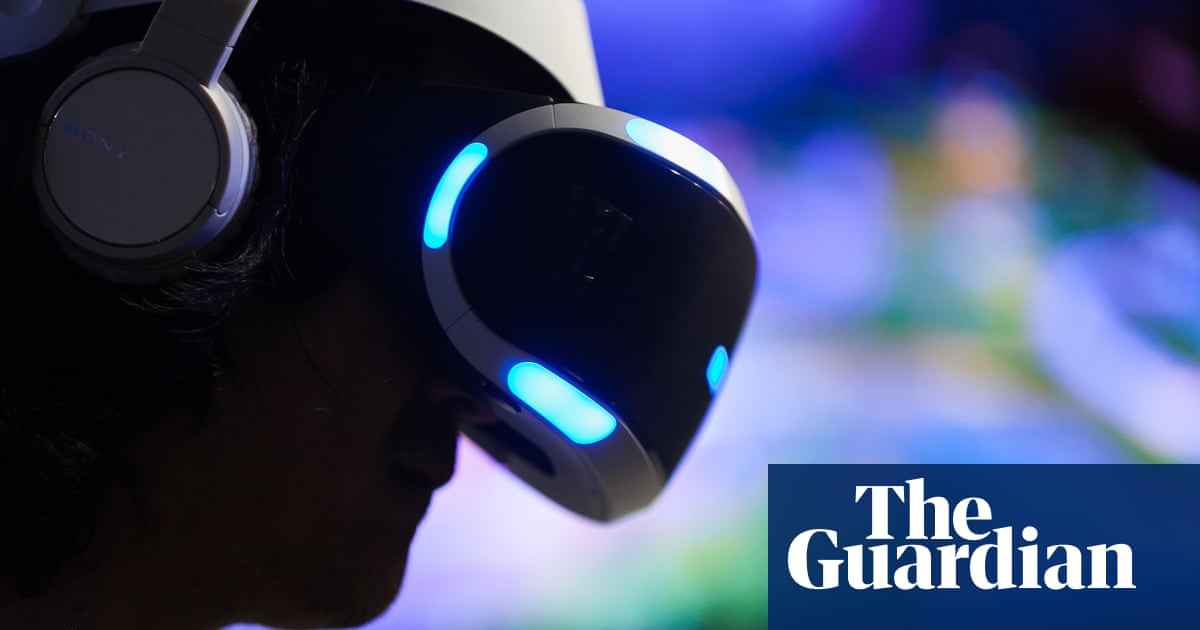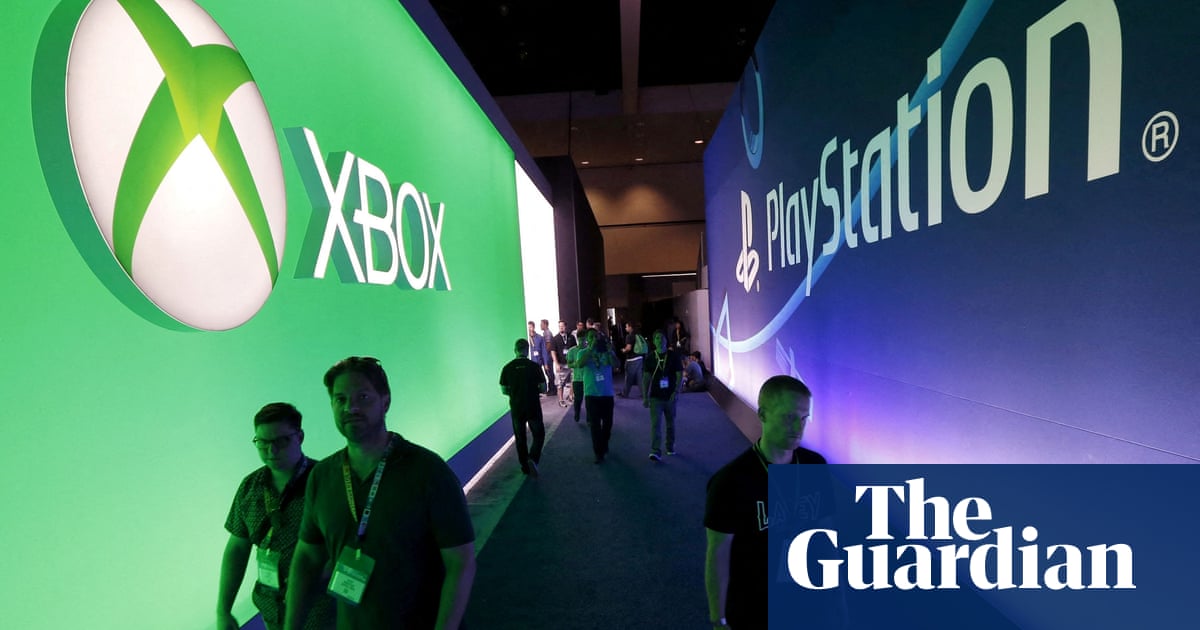
In 2016, when the first wave of virtual reality headsets hit the market after years of hype, I was sceptical. I was totally sold on VR, having had my mind blown playing a space dogfighting sim the previous year at internet-spaceship convention Eve Fanfest. But the original Oculus Rift and HTC Vive were just so unwieldy. They needed too many cables and so much space to operate that you had to dedicate a small room to them (which some of my more techy friends happily did). They were expensive, as were the PCs that you needed to run them. And having already played with VR several times at trade shows, the novelty was wearing off fast. Cool, sure, but the future of gaming? Nah.
The original PlayStation VR headset was the least technically powerful of that first wave of home VR tech, and also the least annoying to use. I was obsessed with Tetris Effect, which is a transcendental experience in VR, and its music-game cousin Rez. I played Moss, a charming storybook-style adventure about a mouse. But then PSVR went back in my Bottomless Drawer of Video Game Peripherals, and I never felt the urge to get it out again.
I’ve been playing around with PlayStation VR 2 this week, and it’s been so long since I played VR games that the novelty is kinda back. In some ways, gaming VR is a world away from where it was in 2016. The headset is lightweight, attractively futuristic, fits well and is tethered by only one, relatively unobtrusive cable. Setting it up took maybe five minutes. It plugs right into the PlayStation 5, without a power brick or extra cables or a camera. The motion controllers look nice and work well. It’s got 3D audio with built-in earbuds, and eye-tracking so that you can select things in menus by looking at them. I was straight into a game 10 minutes after taking the thing out of the box. (If I had a Meta Quest 2 headset, I wouldn’t need any cables at all.) The convenience of home VR is finally where it needs to be.
But in other ways VR is exactly where it was in 2016. Over the years, very few VR games have been worth playing. Most of the ones that PlayStation VR 2 is launching with have been out for years – and you can’t play your old PSVR games on the new headset. Speaking of money, the PSVR2 costs more than the PlayStation 5 that you need to play it: £529.99. Its flagship launch game, Horizon Call of the Mountain, is £60. Have you not heard that we’re in a cost of living crisis, Sony? I’m having fun with PSVR2, but I wouldn’t buy one – it has done nothing to change my feeling that this is a niche technology for wealthy nerds.
The thing is, no matter how good a VR thing is, I just don’t want to play in VR. I don’t like being unable to see what’s happening around me when I’m playing a game, because I have two small children and a cat, and in the 10 minutes I spend playing Gran Turismo in VR, the entire house could be collapsing around me.
Also – and six-plus years of using VR headsets has not changed this – it makes me feel sick. After about 20 minutes, sensory overwhelm kicks in and I get a headache and feel nauseous. I suffer from motion sickness – if I look at my phone in the car I risk throwing up. Although this isn’t a problem that affects everyone, it affects enough people (between 40% and 70%) to make VR a tricky proposition as a mainstream technology. Studies have also found that it affects women more than men, partly because, as this researcher suggests, VR headsets were designed by and for men.
Years ago, when I wrote about the first wave of VR headsets, a well-meaning reader outlined all of the things I might do to alleviate my discomfort, including taking travel sickness pills, building up my tolerance with incrementally longer sessions and blowing a fan in my face. Sound advice, perhaps, but if I have to medicate myself and spend weeks acclimatising myself to be able to use VR without wanting to vomit, I might reasonably ask myself whether it’s worth it.
Most of the practical annoyances of early VR are gone now – all of the cables, the fiddly setup, the awkward controls, the heavy headsets. The lightweight, cable-free Meta Quest 2 and high-end PlayStation VR 2 headsets offer us an experience that’s about as good as in-home VR’s ever going to get, for the foreseeable future. The fact that I still don’t particularly want to use it raises questions for me about this technology’s viability outside of its niche. VR is novel, and thrilling for short periods, but like 3D cinema, it’s inessential. Long-term readers will know that I’m no fan of big tech’s conception of the metaverse, which is informed entirely by capitalist greed and not at all by what actual people want; I am sceptical of companies like Meta trying to persuade us that we need VR in our lives. It is a technological solution to a problem that doesn’t exist.
I don’t think Sony is trying to sell us on the metaverse, though – I think it’s trying to sell us on a cool, expensive toy. And PSVR2 is super-impressive as a cool, expensive toy. But does it have much of a future? The original PSVR only sold to 5% of the PlayStation 4’s total audience, and that was before the pandemic ransacked the global economy. Can PSVR2 do better?
What to play
If you are tempted by a PlayStation VR 2 headset, and you have the disposable income for it, the first game you should pick up is Horizon Call of the Mountain, a very confident virtual-reality adventure within the glorious-nature-and-robot-dinosaurs Horizon universe. You spend most of your time climbing, shooting a bow and arrow, or watching people talk, three activities that are well-suited to VR. It looks truly wonderful, and it’s full of those jump-out-of-your-seat rollercoaster moments that work so well when you’re fully immersed. It’s replete with playful touches: a paintbrush and paints left lying around so you can daub your name on a rock face, plates and cups that you can pick up and throw around just because, lots of tactile objects to grab. It’s relatively short, but I couldn’t hack it for more than 20 minutes at a time, so it’ll last me a while.
Available on: PlayStation 5
Approximate playtime: seven hours
What to read
Crazy Taxi fans will be charmed by this solo developer’s quest to create his dream tribute to the game, entirely on his own.
Some of the American games sites interviewed the world’s most famous game designer Shigeru Miyamoto at the opening of Universal Studios’ Super Nintendo World theme park in LA. I’m not jealous at all. IGN’s interview has lots of lovely details about the park and Miyamoto’s influence on it.
Microsoft has signed a “binding” 10-year contract with Nintendo to bring Call of Duty to its consoles, which strikes me as a very odd thing to do with a series of games that you do not yet actually own. (Activision-Blizzard and Microsoft’s merger is still pending, and presumably the company will be hoping that this helps sweeten the regulators who’ve put the brakes on the deal.)
Saudi Arabia’s wealth fund keeps on upping its stake in Nintendo. It now owns over 8% of the company. It also owns close to 6% of EA, and nearly 7% of Take-Two.
What to click
Insert coin: the virtual reality arcades regenerating northern high streets
Forspoken review – missed opportunity for a great gaming heroine
Ten great games about alien invasion
Wild Hearts review – fantastic beasts and where to fight them
Found in translation: How Like a Dragon brings Japan to the rest of the world
Question Block
This week’s question comes from reader Tombo_h:
“How do you go about reviewing an open-world game? You can watch a movie all the way through, read a book to the end, but how do you get a handle on something designed to be enjoyed over hundreds of hours?”
It’s a difficult skill, this. About three or four times a year, I drop everything and spend eight hours a day playing a gigantic flagship game to meet a review deadline. Sometimes this is an enjoyable way to earn a living. Other times it’s horrible, because open-world games aren’t supposed to be played in a week; it makes you hate them. When I reviewed Grand Theft Auto V (above) back in the day, I played it for 50 hours in five days, and then had to think and write about it critically while my mind was so scrambled that I was hallucinating about breaking car windows with my elbow whenever I went outside.
Every review is the product of an individual’s unique experience with a game; but reviewers’ experiences rarely mirror those of people who are going to buy it and play it like a normal person. So, you have two ways to approach it: try to bludgeon your way through the main story as fast as you can, or chill out and play the game for as long as you’ve got without worrying about finishing it. These days I go for the second approach, and I take my time; if I’m not done with a game, I put the review up late. Usually, there’s not much you don’t know about a game after playing it for 25 hours, even if it’s mammoth. Once I feel like I can give people a good steer on a game’s nature and quality, and talk about my own experiences with it confidently, I’m ready to review it.
This article was amended on 22 February 2023 to remove incorrect information about Job Simulator and Beat Saber and to give the correct price for Horizon Call of the Mountain.
If you’ve got a question for Question Block – or anything else to say about the newsletter – hit reply or email us on pushingbuttons@theguardian.com.












